Fun Ways to Practice Reading and Writing with Handmade Cards
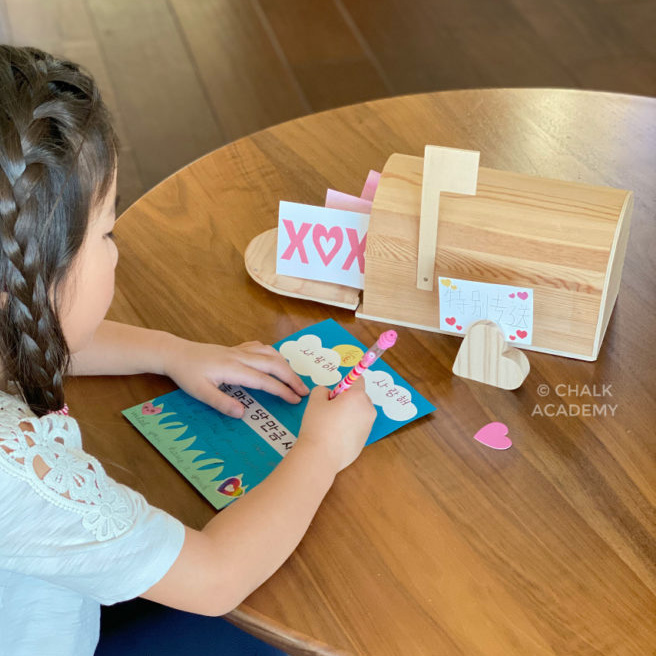
My children love to make cards: Birthday cards, Get Well Soon cards, I Love You cards, Thank You cards, Christmas cards. In addition to being thoughtful gifts, handmade cards are a wonderful opportunity for child-led reading and writing practice in preschool, elementary school, and high school. And as a Chinese-Korean American family, handmade cards have been a fun way to boost literacy in English, Chinese, and Korean.
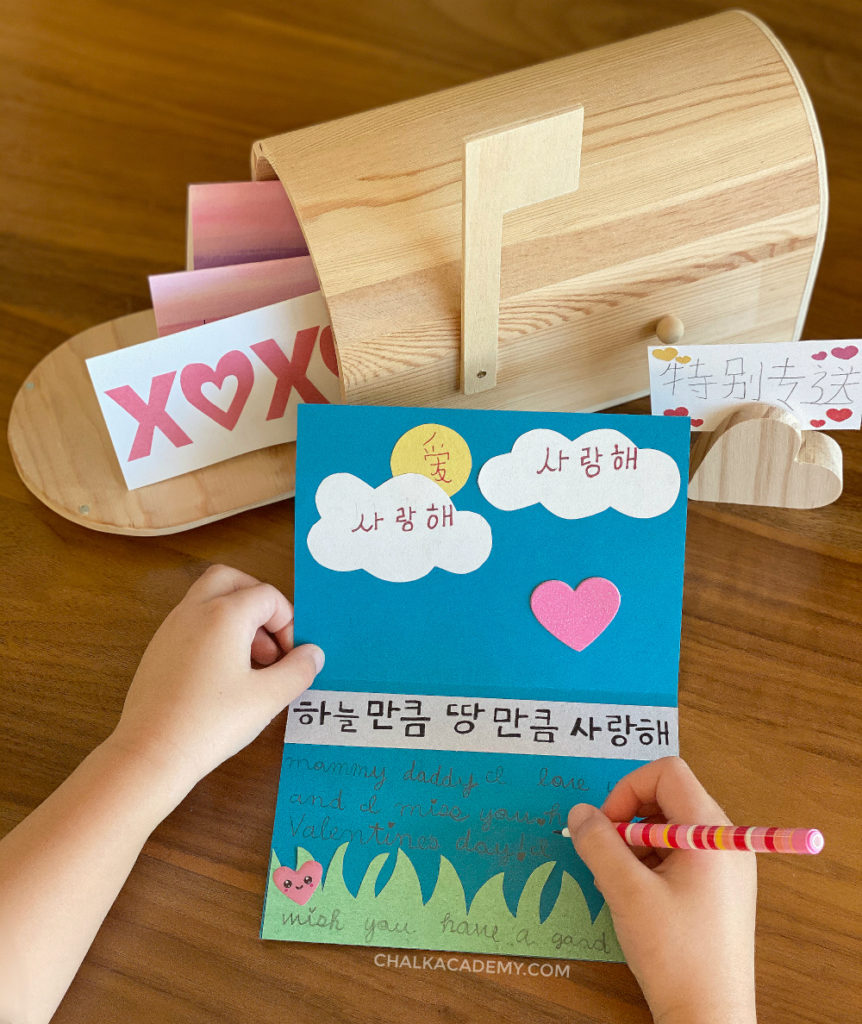
Children are like mini Hallmark factories, pumping out personalized cards for everyone they love. As toddlers, the cards start as scribbles; over time, they transform into legible heartfelt words and doodles. At all ages and stages, handmade cards are truly a blessing!
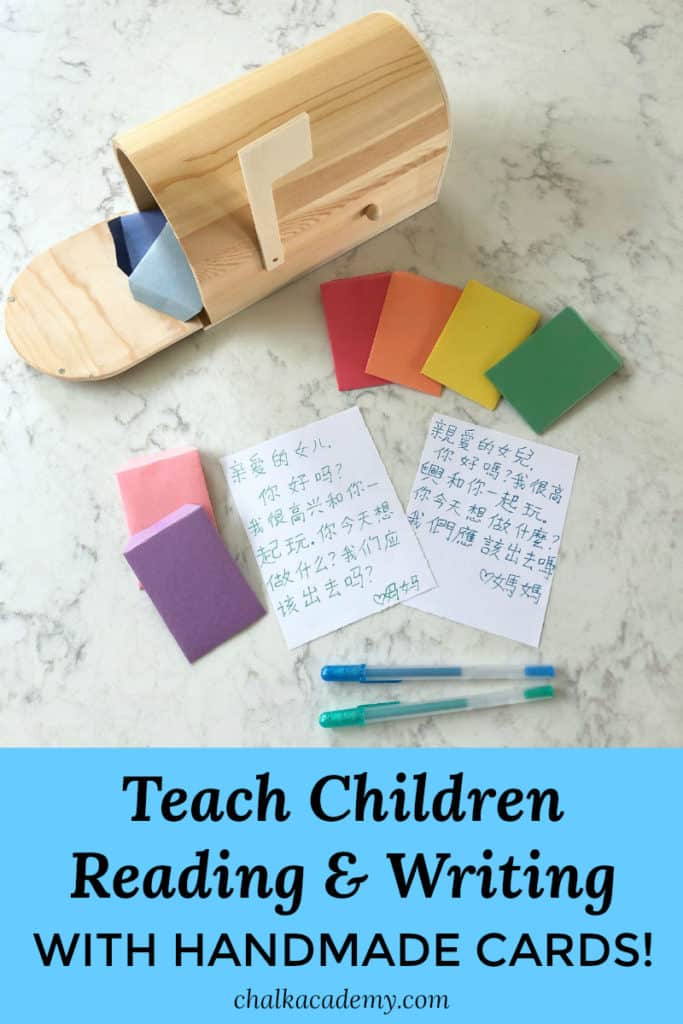
Benefits of handmade cards with kids
- Relevant: Through card-making, children can become motivated to read and write in one or more languages, because the purpose is meaningful.
- Language exposure: Even if your family is not fluent in another language, cards are a simple way to plant seeds of exposure to English letters, Chinese characters, and Korean words.
- Eco-friendly: Handmade cards are affordable and can encourage upcycling of scrap paper and cardboard. Save those envelopes from junk mail – your kids might enjoy repurposing them!
- Creative, imaginative play: kids can have fun making cards for their stuffed animals and toys!
- Nurture interests: If your child loves cars, animals, or food, incorporate those elements into the birthday cards! Ask them what they want to include in the card! A child’s interest is a key motivating factor for learning.
- Connection and community: Handmade cards are a wonderful way to encourage children to give encouragement to people going though difficult times. They are also important for showing gratitude to friends and family.
Chalk Academy is reader-supported. Some of the links are affiliate links. When you buy something through an affiliate link, we may earn a very small commission at no additional cost to you. More details here.
Reading practice with handmade cards at different ages
If your children are working on reading, here are fun ways you can meet your child’s developmental level through handmade cards.
1. Dot sticker word or letter matching
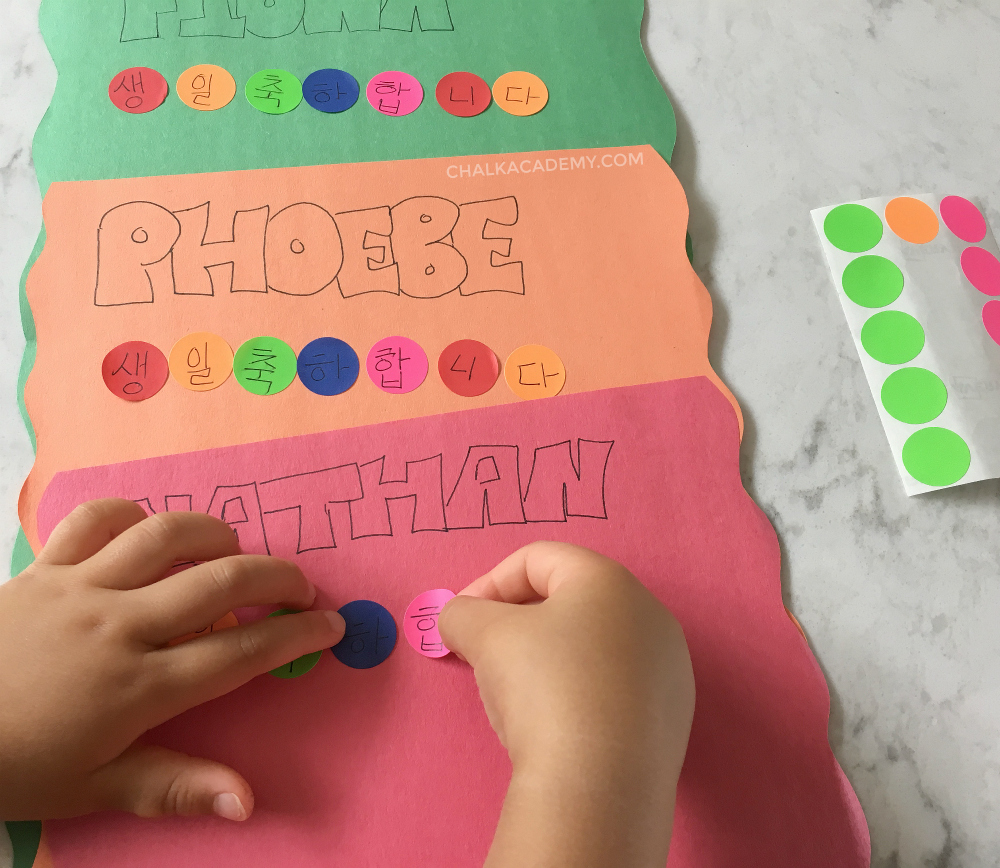
For the birthday cards above, I wrote syllables of each Korean word on different dot stickers as well as the cards. The goal is to match the words on the sticker to the words on the cards to form a sentence.
You can also use dot stickers to match English letters and Chinese characters.
Try this: 15 Ways to Encourage Your Child to Read
2. Cut, paste, and match messages into a birthday card
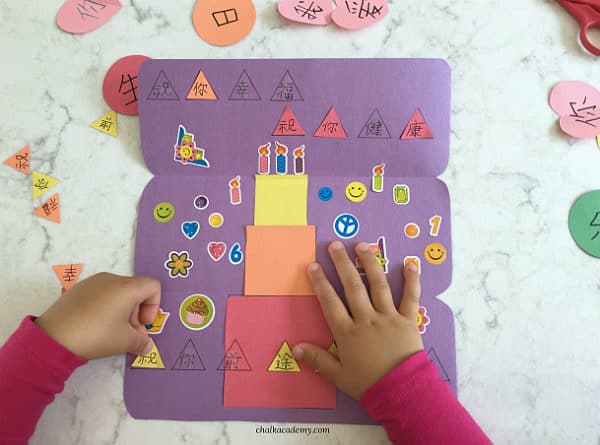
Here’s a fun way to practice important fine motor skills – cutting and pasting! If you have a little extra time, you can write words in shapes. When your child cut’s around words (hello, eye-hand coordination!), they are exposed to words on the paper (hello, language exposure!). These cut-out words can then be used to match words on the greeting card!
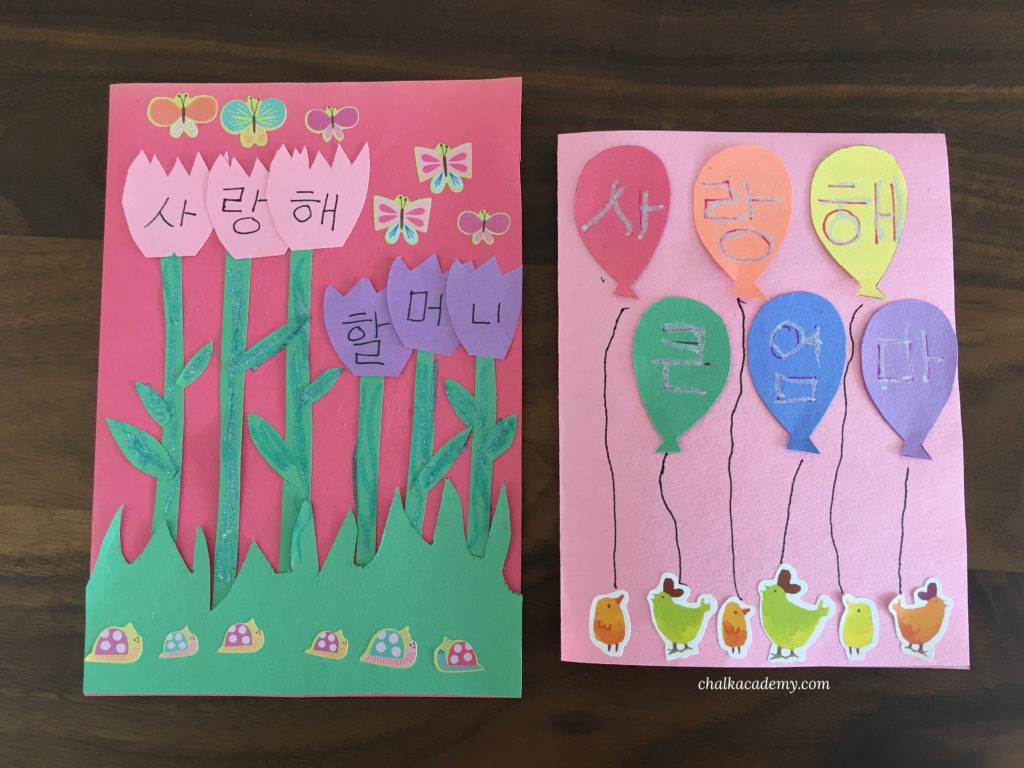
Note: If your child does not yet have the coordination for cutting and pasting, you can use the aforementioned dot stickers or adhesive address labels.
You can also use a large shape punch or help your child cut.
Remember that every child is learning at her own pace, and we want to offer activities that fit their abilities and build confidence!
3. Color in block letters and numbers
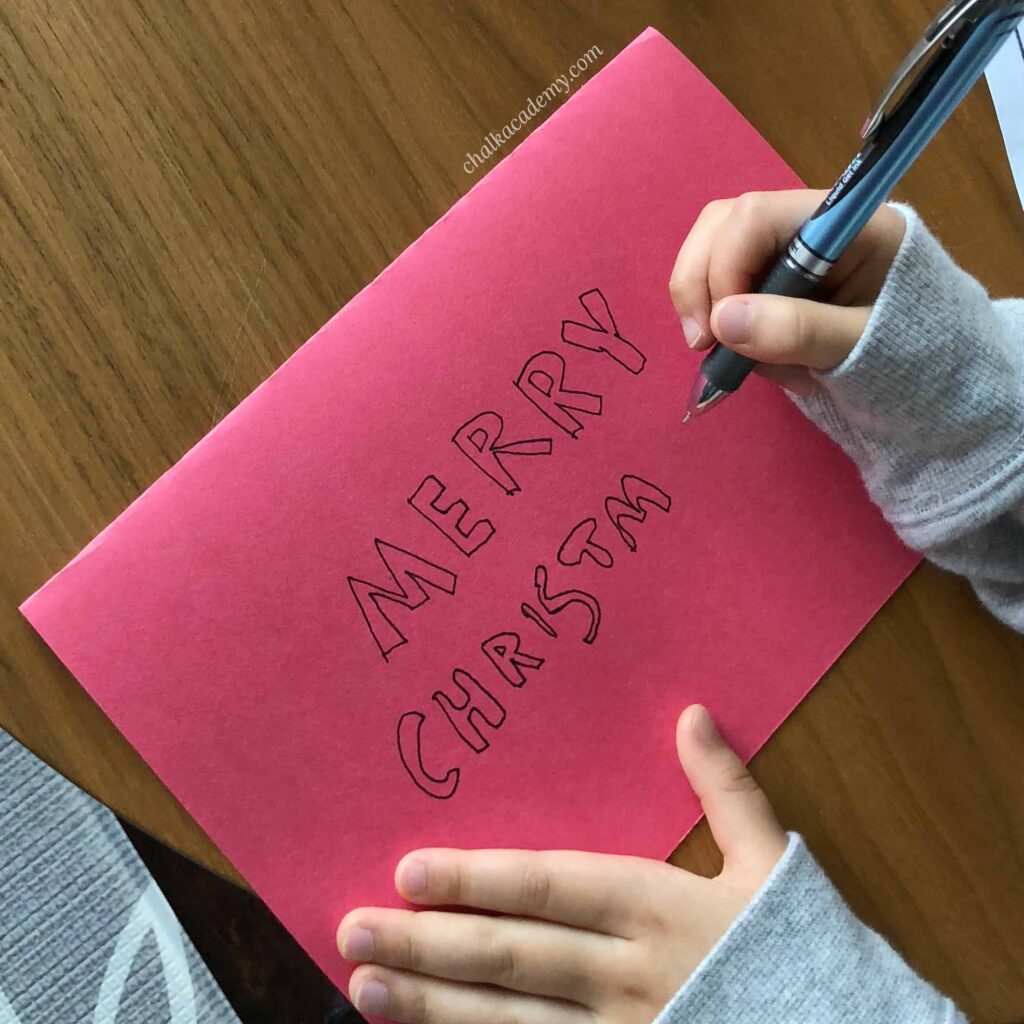
Anyone else a fan of bubble letters? If your kids like to color, this can be a fun way to encourage kids to interact with words in English, Chinese, Korean, or any language! Although let’s be honest – bubble letters in Chinese seems like the ultimate challenge!
4. Explore different materials for handmade cards
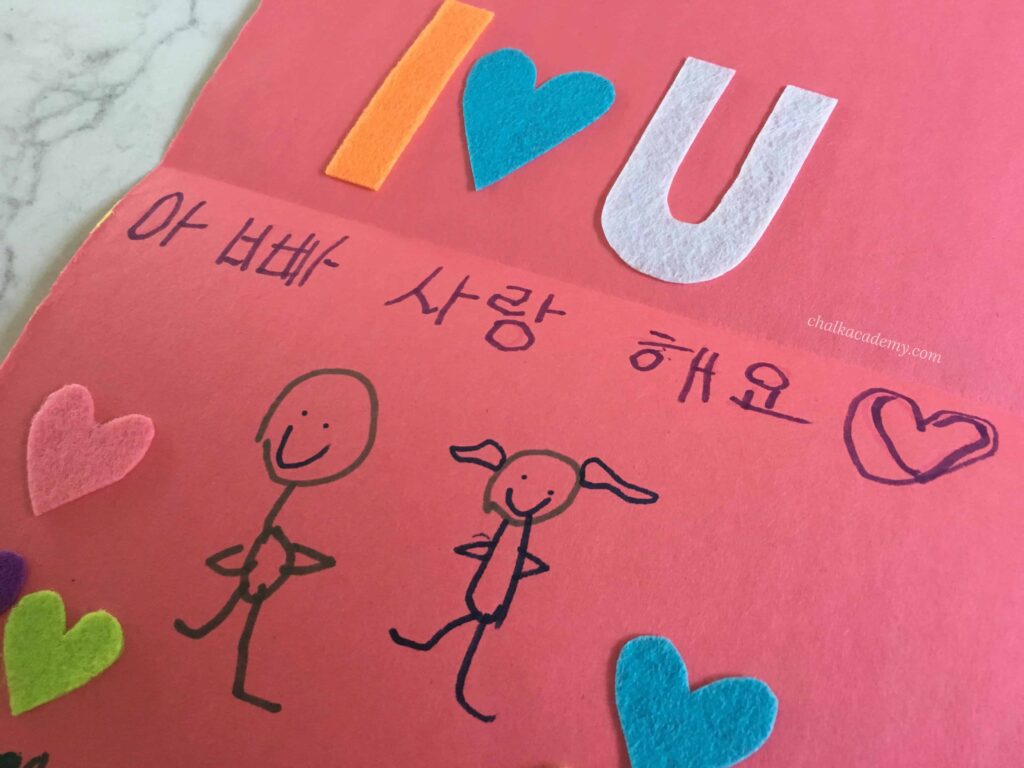
Make letters and words with different textures! Use felt, cloth, cardboard, and other types of scrap paper and materials.
Writing practice with handmade cards at different ages
Here’s how writing practice with handmade cards can evolve as children grow!
1. Tracing with various markers
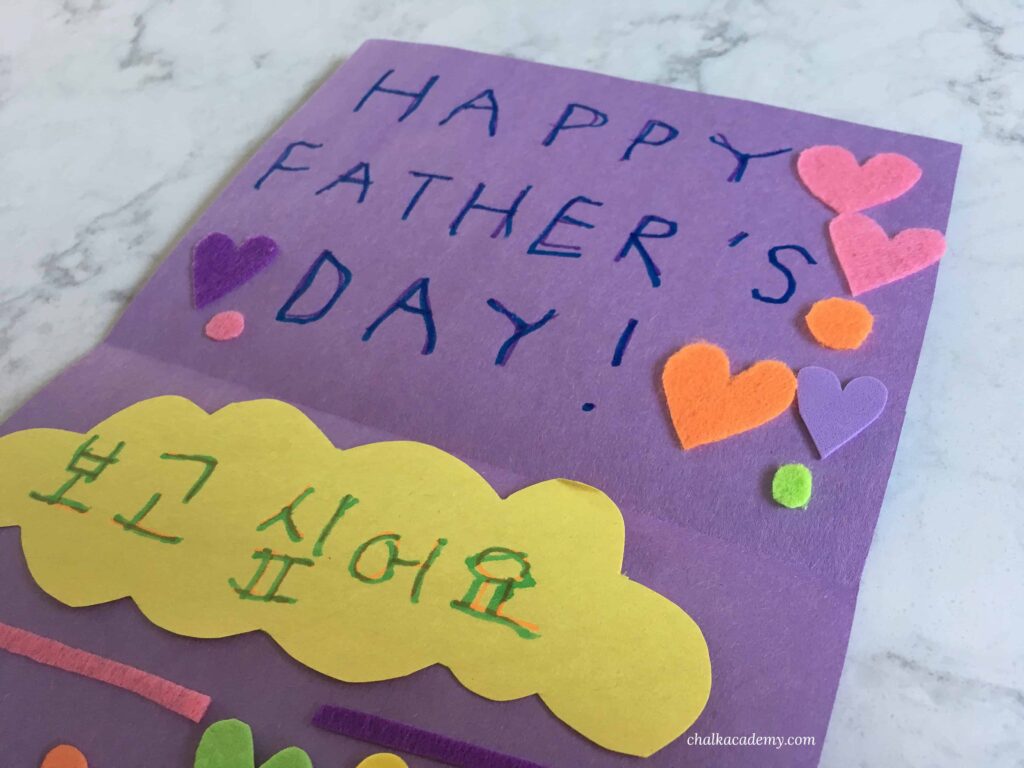
When my children first began to trace, I often used a black marker to write the words. Then I would have my children trace the words with a highlighter or other light-colored marker.
This was successful because:
- To my children, the black marker was less exciting than neon highlighter colors.
- Tracing with highlighters allowed for the neat adult handwriting to stand out. This meant that my children could see how the letters should look. They wouldn’t have to worry about making mistakes with writing, and the card receiver could actually read the message!
2. Dictation and copywork for handmade cards
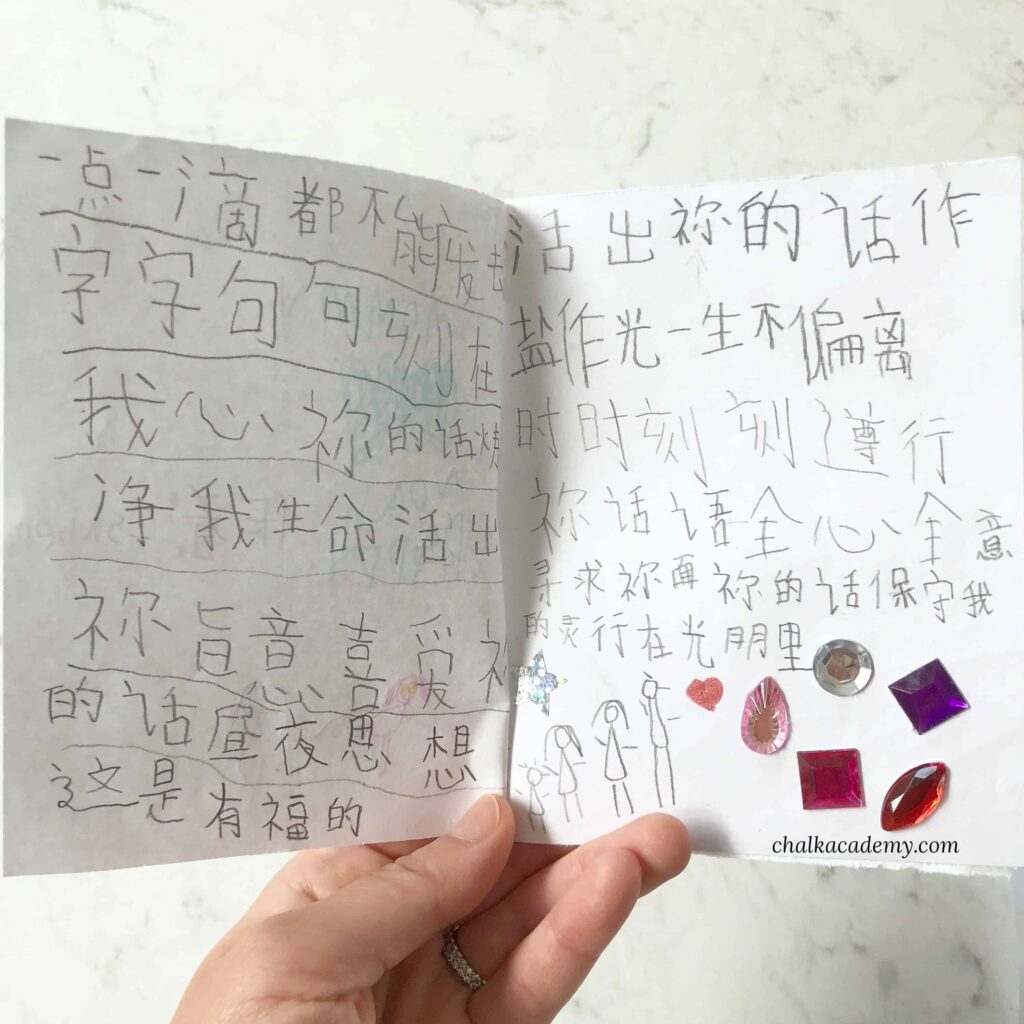
Just like our effective dictation journal idea, the same strategies can be used for making cards. Ask your child what they want to say, and write it down for them. Then, they can copy your written message onto their paper.
If your child is not ready to come up with their own message, you can give them a few phrases to choose from.
3. Writing messages independently
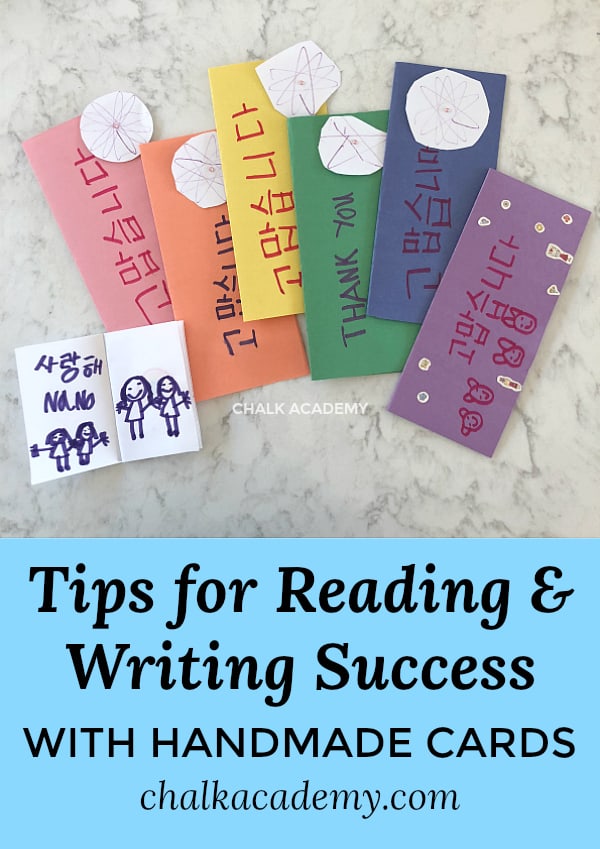
Yes, independence is possible with practice and patience!
Remember, every child learns at their own pace, and it’s not a race. Teaching begins with caregivers and teachers modeling reading, writing, and perseverance. Our children will naturally feel encouraged to try when they feel supported and unrushed. Giving specific praise about effort can wire our children toward resilience.
In all languages, literacy can be encouraged in a relevant, child-led way that is also meaningful for family bonding!
My own two children are years apart in their fine motor development, but they are having fun learning in their own ways.
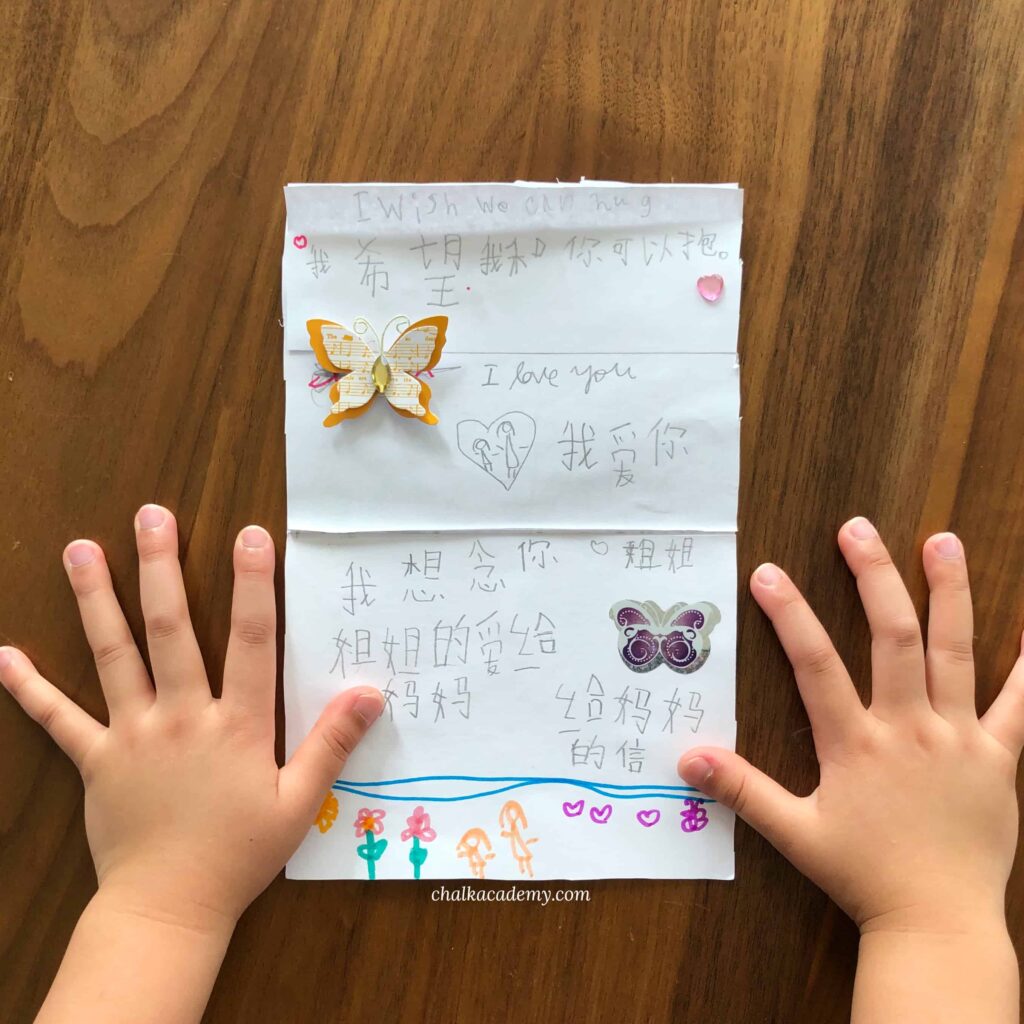
Cute toy mailboxes for kids
So many parents and teachers have asked about our cute, inexpensive toy mailbox! It has been a great motivator for their card-making adventures. My children can’t wait to peek inside the mailbox. They love to seal envelopes and lift up the flag to let us know that we have mail!
- Joann Fabrics Small Wood Toy Mailbox – This is what we have; light sanding with fine sandpaper required prior to use.
- Melissa & Doug My Own Wooden Mailbox Activity Set (also at Target) – This is another adorable option!
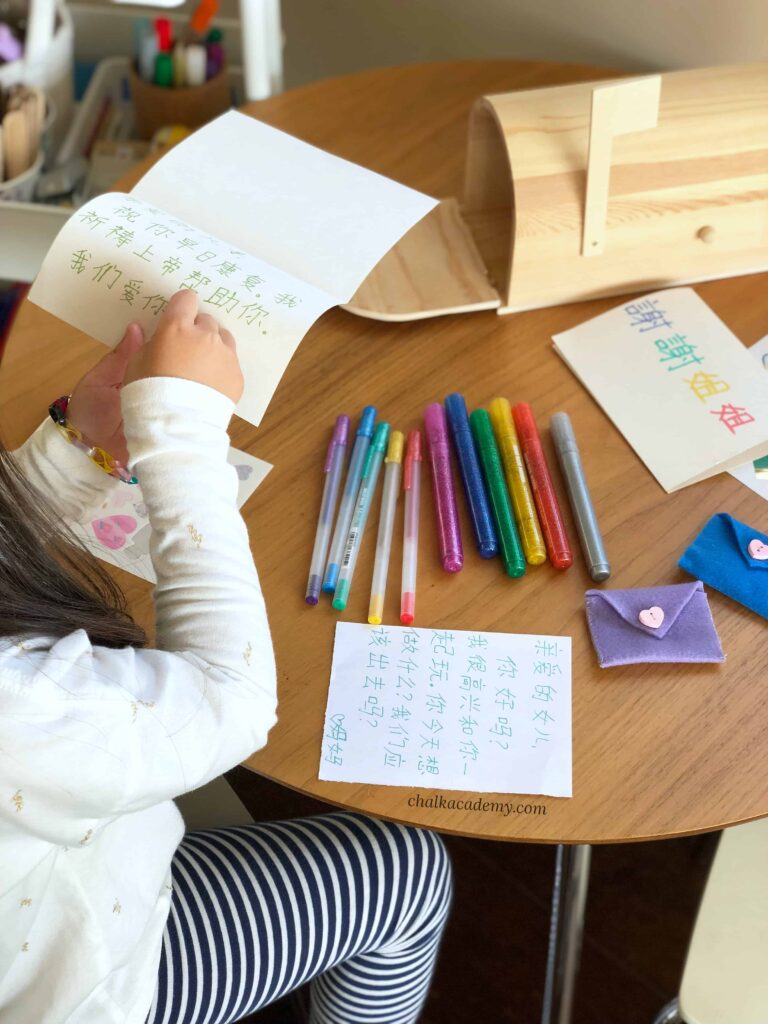
Tools for creating a card and letter writing station for kids
Here are other supplies that can support creative card-making for kids!
- Envelopes
- Mini envelope template
- Upcycled blank envelopes
- Art cart
- White 3-tier rolling cart – This is what we have.
- HollyHome 3-tier service cart – A similar great option.
- Art materials (Adjust contents depending on your child’s age; younger children generally need fewer options)
- Scrap paper (to reduce paper waste)
- Colorful construction paper
- Colorful pens, glitter gel pens, etc.
- Stickers
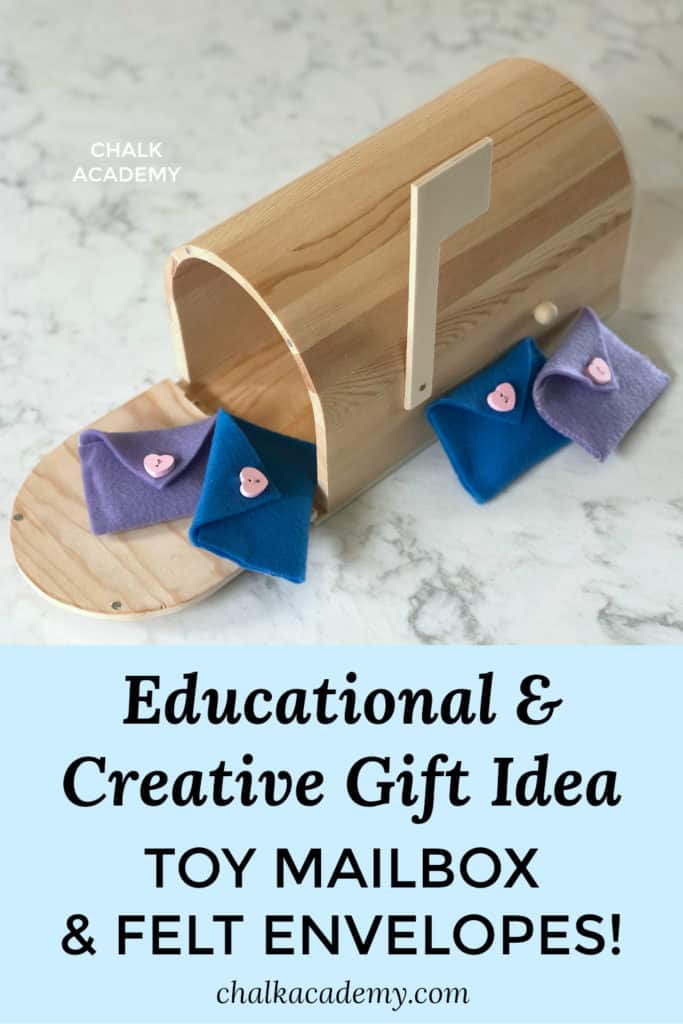
What questions do you have about teaching reading and writing?
I’d love to hear your thoughts about teaching reading and writing at home and how learning is going for your family. Please leave a note in the comments below.
In the meantime, I hope the following articles can be helpful!
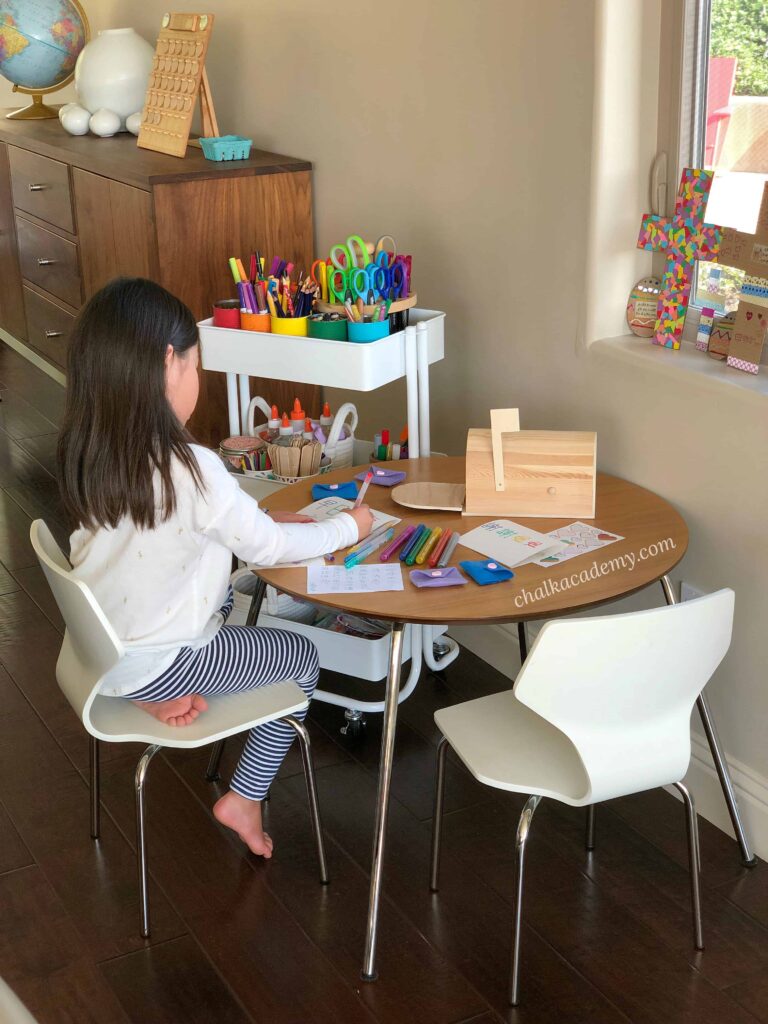
Your site is really wonderful! Thank you for all the wonderful tips and resources you are sharing! With being thrust into homeschooling this year, these resources are super useful and also really fun for my child. Thank you!
You’re such a hands on parent 😭. Leaving inspired and equipped! Thanks!
Thank you for taking the time to write, Sandy! I hope the ideas can be helpful!